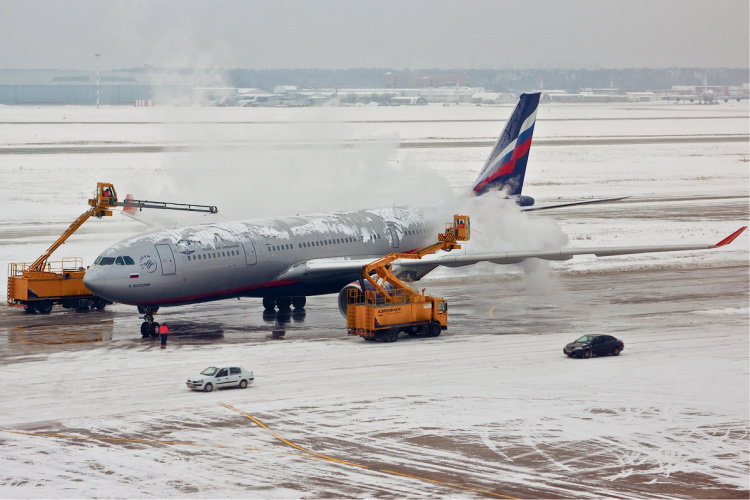During harsh winters, buildup of ice on aircraft wings can cause lengthy delays. Current defrosting systems work by melting all of the ice from the top layer down, which wastes energy and can take a long time. Researchers from the University of Illinois at Urbana-Champaign (UIUC) and Kyushu University in Japan have now developed a system which takes a different approach, is far more energy-efficient and faster in removing the ice.

The rationale is simple and borrows from the natural movement of glaciers: if the ice directly in contact with the surface is melted, the rest of the ice will simply slide off. Explaining the defrosting system in Applied Physics Letters, Nenad Miljkovic of UIUC and colleagues note that much of the energy pumped into conventional deicing goes into heating other components of the system rather than melting the ice. “The systems must be shut down, the working fluid is heated up, then it needs to be cooled down again,” Miljkovic said. “This eats up a lot of energy when you think of the yearly operational costs of running intermittent defrosting cycles.”
_________________________________________________________
Further reading
Interview: Jean Botti, Chief Technology Officer, Airbus
Lockheed Martin technology chief Dr Ray O Johnson
Sustainababble and the circular economy
_________________________________________________________
Instead, the team proposes delivering a pulse of very high current to the interface between the substrate – for example, an aeroplane wing – and the ice. This is introduced using a coating of indium tin oxide (ITO) on the substrate surface. ITO is a transparent conducting material most familiar from its use as an electrode on the touch-sensitive screens of electronic devices. The rest is up to gravity.
To test the system, the team defrosted a small glass panel cooled to -15.1°C and to -71°C, these conditions being representative of the warmest and coldest parts of Antarctica. In both tests, the ice was removed with a pulse lasting less than one second. In a real system, gravity would be assisted by airflow, Miljkovic said. "At scale, it all depends on the geometry. However, the efficiency of this approach should definitely still be much better than conventional approaches."
The next stage for the group is to study the behaviour of ice on larger, more complex shaped surfaces such as those encountered on aircraft. Miljkovic added that the team will have to devise methods of coating such services with ITO and calculate how much energy would be needed for these large surfaces.




Swiss geoengineering start-up targets methane removal
No mention whatsoever about the effect of increased methane levels/iron chloride in the ocean on the pH and chemical properties of the ocean - are we...